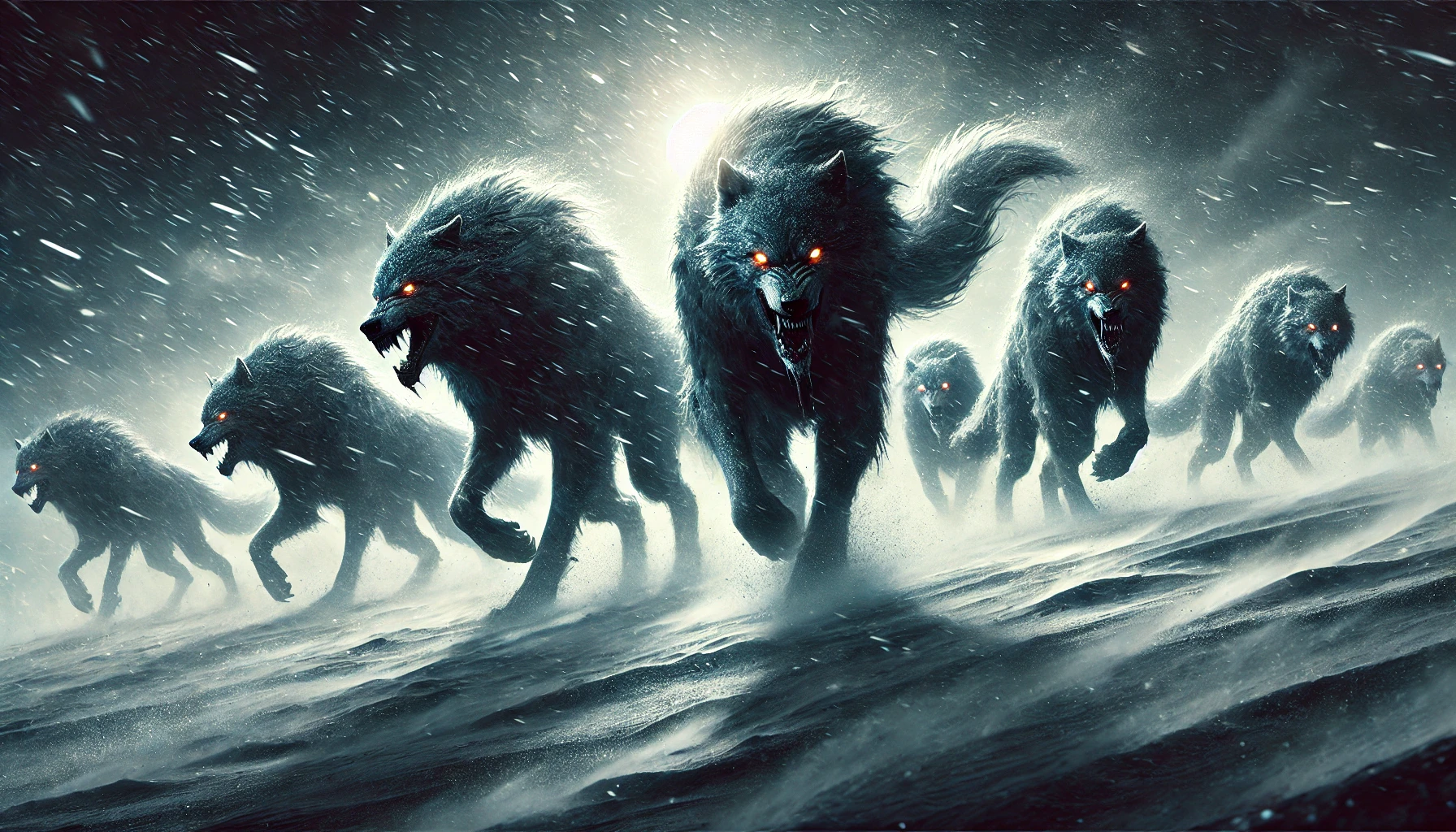The Abyssal Horror: The Kraken's Presence
The sea is vast, unforgiving, and unknowable. Sailors whisper tales of creatures too large for the mind to grasp, beings older than the tides themselves. And among these terrors, none inspire more fear than the Kraken—a leviathan so massive that its body has been mistaken for an island, its tentacles capable of reducing entire ships to splinters in moments. If the water turns still, if the sea birds vanish, if a deep, unearthly rumbling comes from below—it may already be too late.
Colossal and Unmatched: The Kraken's Form
The Kraken is an immense cephalopod, with tentacles long enough to coil around a ship’s hull and pull it beneath the waves. Descriptions vary—some claim it resembles a colossal squid, others a giant octopus, and a few even say it is something beyond comprehension, a beast whose true form is glimpsed only in nightmares.
- Size & Scale: The Kraken’s bulk is so enormous that, when it surfaces, it can be mistaken for a small island. Some reports claim its tentacles alone stretch hundreds of feet, though few who measure ever return.
- Eyes of the Abyss: Its great, unblinking eyes are said to glow faintly in the deep, twin lanterns in the blackness.
- Tentacles of Doom: The Kraken’s limbs, lined with suction cups the size of barrels, can crush a ship’s mast or drag entire crews screaming into the ocean’s depths.
- Ink of the Deep: When enraged, the Kraken spews forth an inky black cloud, darkening the water and obscuring the sky, leaving sailors blind to their doom.
Dreaded Encounters: Sailors’ Accounts
For centuries, the Kraken has haunted the nightmares of sailors, its legend growing with each doomed voyage. Among the most well-documented encounters is the infamous case of the Norwegian trading vessel, The Stavanger Star, which disappeared in the waters between Iceland and Greenland in the late 17th century. Survivors from nearby ships reported seeing a massive, shifting shadow beneath the waves just before the ship was pulled under, never to be seen again. The only survivor, a deckhand found weeks later, spoke of a rising island that moved, a forest of writhing arms, and a scream that echoed from the deep itself.
Stories speak of a fleet of Viking longships, sailing westward when the sea beneath them began to churn. The water turned black, the sky darkened, and before the warriors could react, three ships were dragged below, their sails vanishing into the abyss. The survivors claimed Odin himself had warded them against the beast that day, allowing them to escape—but at great cost.
Lurking Depths: The Kraken’s Territory
The Kraken dwells in the cold, dark depths of the North Atlantic, near the coastlines of Norway, Iceland, and Greenland. Though most commonly reported in Scandinavian waters, some accounts claim that similar beasts have been spotted as far as the Caribbean and the Indian Ocean.
- Deep-Sea Trenches: The Kraken makes its lair in the vast, unexplored abysses, rising only when hunger or anger calls it forth.
- Coastal Waters: Some sailors report seeing its tentacles breach the surface even near well-traveled trade routes, warning that no ship is truly safe.
- Unnatural Stillness: If the sea suddenly turns calm, the winds die, and the birds disappear, it may be a sign that the Kraken lurks just below.
Predatory Tactics: How the Kraken Strikes
Despite its monstrous size, the Kraken is a patient predator. It waits in the depths, sensing vibrations from passing ships before it rises without warning.
- The Swell: Before it strikes, the water may bulge unnaturally, as if the ocean itself is breathing.
- Tentacle Ambush: It attacks from below, coiling its arms around a vessel, crushing its hull and pulling it into the sea.
- Storm Bringer: Some say the Kraken's presence disturbs the sea itself, causing violent waves and powerful whirlpools that leave ships defenseless.
- Carrion Feeder: In rare cases, the Kraken does not attack outright but waits for shipwrecks, feeding on the remains of vessels and crew alike.
Surviving the Unthinkable: Escaping the Kraken
If the signs of the Kraken appear, few options remain—but some sailors claim to have escaped through cunning or sheer luck. Here’s what might improve your chances:
- Stay Silent: Some legends say the Kraken is drawn to noise, the echoes of oars and voices carrying through the deep. If the sea turns eerie and still, it may be best to hold your breath.
- Sail in Shallower Waters: The Kraken prefers the deep. While not a guarantee, staying near reefs or rocky shores may deter an attack.
- Fire and Light: Some Viking tales suggest that flaming arrows or bright lanterns may ward off the beast—though it may simply enrage it further.
- Abandon Ship: A grim last resort—if the Kraken has taken hold, some survivors tell of sailors escaping by leaping onto floating debris, avoiding the full force of its wrath.
Kindred Terrors: Other Sea Leviathans
While the Kraken is the most famous of the deep-sea leviathans, legends of similar beasts exist across the world:
- The Hafgufa: In some Scandinavian sagas, a variation of the Kraken is called the Hafgufa, a monster so large that it does not use tentacles but rather swallows ships whole like a whale.
- The Lusca (Caribbean): A monstrous half-shark, half-octopus said to drag fishermen into blue holes, never to be seen again.
- The Umibōzu (Japan): A spectral, shadowy giant that capsizes ships in the dead of night.
Last Warnings: The Sea’s Ultimate Menace
The Kraken is more than just a monster—it is a force of nature, an abyssal titan that serves as a reminder of humankind’s fragility upon the sea. Sailors who laugh at the old stories often find themselves swallowed by the waves, while those who listen respect the sea and survive another voyage.
If you ever hear a low, rumbling growl from beneath the waves, if your ship rocks though the air is still—pray that it is merely the wind.
Because if it is the Kraken, you are already in its grasp.



